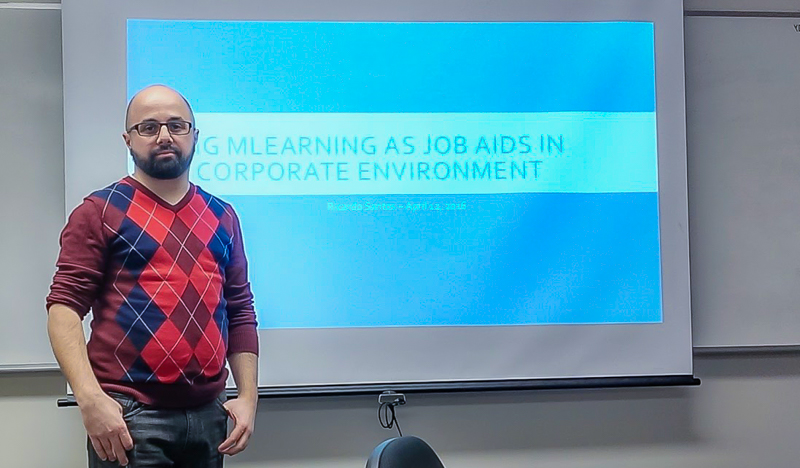|
When I began my corporate career, I found myself continually helping my coworkers with issues. It soon became apparent to me that my calling was to teach. I truly believe in sharing information with students and broadening their horizons. I take pride knowing that I have a part in someone’s development, as small or big as that may be. My teaching philosophy has grown out of that corporate experience, and I have learned over time how to apply teaching principles before, during, and after the actual teaching event.
|
 Practicum for Instructional Strategies at Sheridan College Practicum for Instructional Strategies at Sheridan College
|
Prior to teaching any class, I ensure I am fully prepared. All information including handouts, exercises, data, hardware and software must be ready. When class begins, I make certain the students are comfortable with the environment, which means, they are comfortable with the technology and the subject they are learning. I like to take the time to explain the basics, including how to use the tools and clearly explaining the subject and agenda. At the start of each class, I like to begin with a fun ice breaker to get a light and open atmosphere for the remainder of the class.
During class, I also encourage peer-to-peer learning. This type of learning creates a community-based classroom and in most cases, it identifies students who can become mentors during training and after the training. This approach ensures that the students have access to help long after the training is completed.
“Becoming a student enables you to study your experiences and transfer the insights about what does, or doesn’t, work to your own teaching.” (Brookfield, 2017). This quote embodies another of my philosophies: I remind myself how I like to learn and remember my own student experience. Based on that reflection, I strive to make the classroom enjoyable by using strategies such as humor and games. Reflecting on my past learning and teaching experiences, enables me to adjust my lesson plans accordingly.
In conclusion, my teaching philosophy includes strategies for preparing for the students before they arrive, for ensuring they are comfortable in the classroom, and for providing support after they leave the classroom. These strategies include building a safe and fun learning environment, encouraging peer-to-peer learning to create a community environment where mentors are identified and placing myself in the students’ “shoes” to create a better learning and teaching experience.